
5 Best AI Writing Tools for Content Writing and Content Writers

Jessica Michael
Published onAI is changing the landscape of content writing, and many content writers are starting to incorporate AI text generators into their work. But what are the best AI writing tools for content writers?
In this article, we'll review the 5 best AI tools for content writing, including Copy.ai, Jasper.ai, Anyword, WriteSonic, and HyperWrite.
Disclaimer: Neither the author nor Journo Portfolio are associated with or sponsored by any of the AI platforms reviewed.
Experimenting with AI text generators
For this article, I signed up for the free trial option for each AI writing generator. As such, there were tools that weren't available to me unless I upgraded. In addition, I wanted to make sure each comparison was fair, so I used the same blog article prompt for each: "Write a 500-word article about golden retrievers." For those AI writing tools that allowed me to customize my brand voice by inputting samples of my writing, I used the same copy selection for each.
As you'll see, many of the blog articles were similar. Because AI writing generators are based on LLMs (the most common, by far, being ChatGPT), they end up giving fairly similar results. Large Language Models train on vast amounts of data that can then be transformed into content. AI writing generators take LLMs and put them into an easy-to-use customizable workflow. The technology they are each based on is very similar, but the tools, add-ons, and how you build out your article may differ.
Let's dive in.
Copy.ai
Copy.ai is one of the most popular AI writing generators. It's based on ChatGPT 3.5 (ChatGPT 4 for the Pro pricing tier). It's available in over 25 languages and has 90 different tools and templates you can use.
They have a free tier, which gives access to 24 free AI tools including an email subject line generator and a meta description generator. However, the free tier has a 2000 words per month limit, which isn't much if you are a professional content writer.
This AI writing tool allows you to customize your brand voice by adding writing samples you'd like it to mimic. And you can use Copy.ai to create content outlines, which you can then base your article off of. This can be a great way to get past writer's block.
Plagiarism can be an issue, as it does not have a plagiarism checker. It also does not give sources, so any data sets will have to be researched and hyperlinks added in later.
So, how did Copy.ai do with my golden retriever blog prompt?
Copy.ai blog article test
Copy.ai has two options for writing a blog post. In the first example below, I inputted my prompt, selected my customized brand voice, and Copy.ai wrote the rest.
The article itself was decently written, although I would have to run it through a separate plagiarism checker like Grammerly before I was comfortable publishing it. It also lacked any kind of sourcing, so that would need to be a later addition as well.
The wording and structure was intelligent, and it would definitely work as a blog post for a pet-based business. It was not, however, particularly interesting or unique. When I regenerated the article (creating a new version), it was really just a rehash of the same information, but that's an issue that seems to be true for all of the AI writing tools I tested.
Example 1
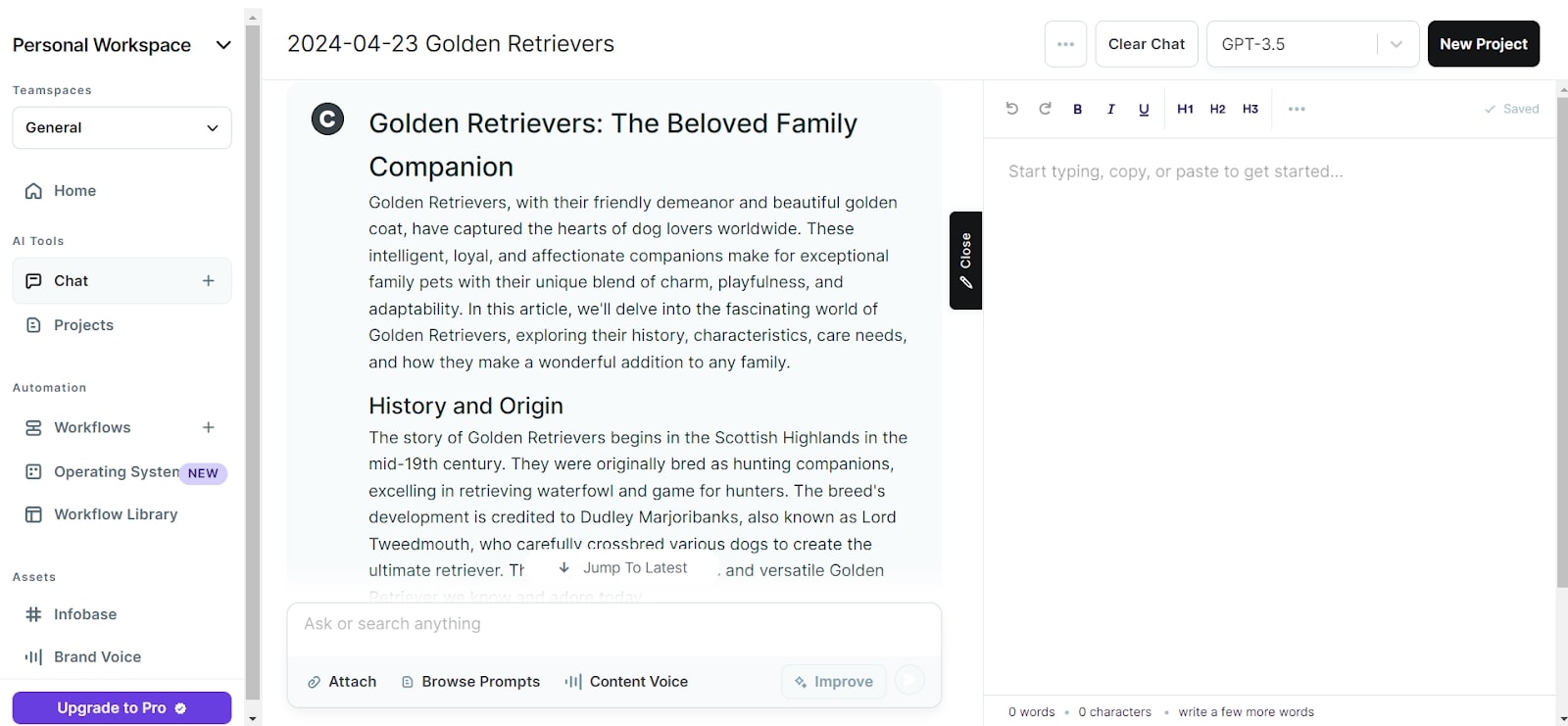
The second way you can utilize Copy.ai is by inputting a sentence and letting it suggest the next bit of content. You can accept the suggestion or refuse it.
This method essentially allows you to write the article along with the AI tool, which means you can create a more unique blog post and still benefit from AI's suggestions. Personally, this is the method I would be more likely to use as a content writer as it allows me to control the direction of the article more.
Example 2
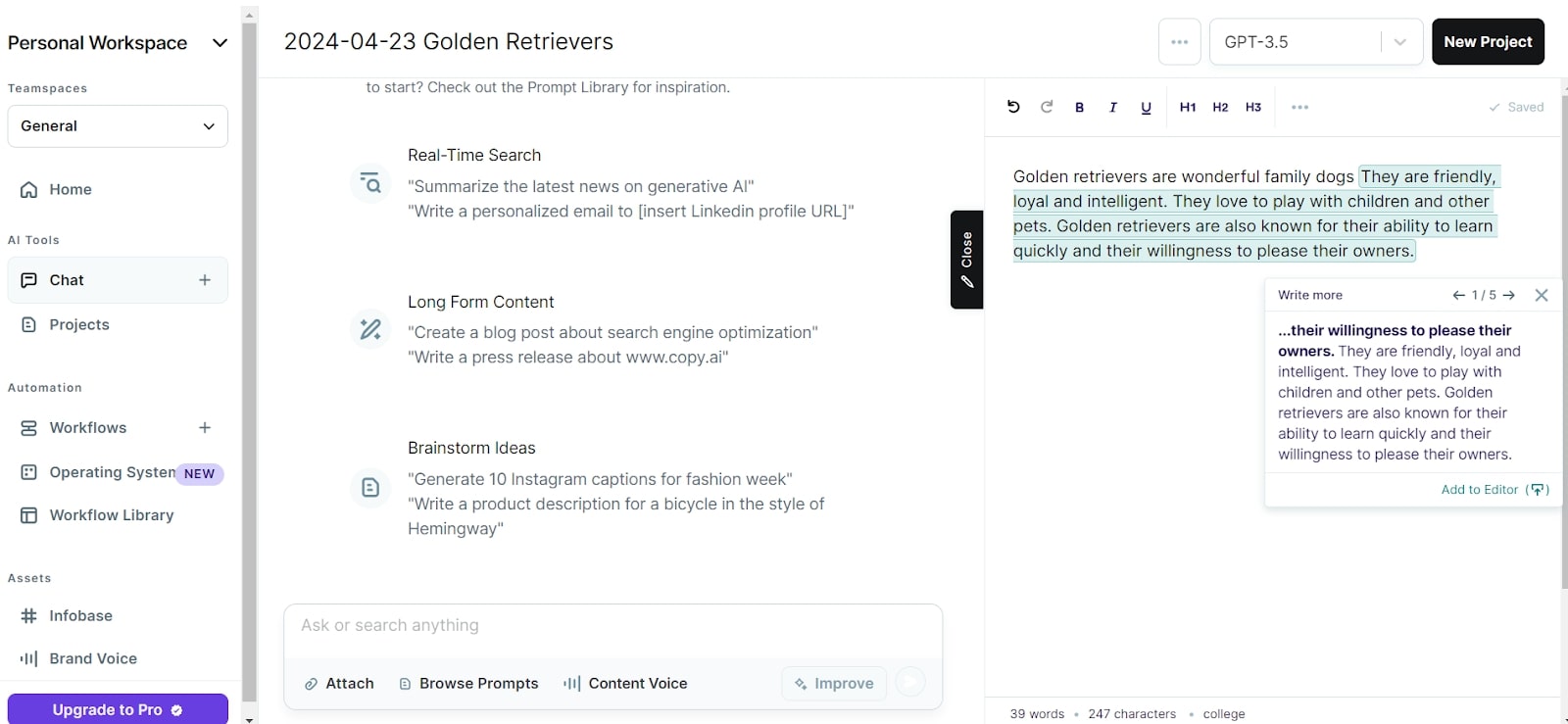
Copy.ai final thoughts
Copy.ai is a great option for more mundane and repetitive writing tasks. It has a bland overall tone, but the writing is clear and concise. In other words, it's not going to rock anybody's world, but it suffices for basic content and can be a great way to get started on an article or overcome writer's block.
Jasper.ai
Jasper.ai is considered by many to be one of the best AI tools for content writing. It has a ton of options and many different ways to use the platform, from workflows, to publishing, to working with one of their on-staff writers.
Because it's more complex, it also offers multiple training options, including a 30-minute webinar and additional training modules. This AI platform is full-service, which can be great if you own a marketing business, but might be more than most content writers need.
It's also expensive with no free option (although they do offer a free trial). The cheapest option at $39/mo only allows for one brand voice, which can be tricky if you work with multiple clients and businesses.
However, Jasper.ai is a marketing-forward AI platform that uses multiple LLMs, including their own marketing-specific model, which is great for digital marketers. It also claims to be better at sourcing and backlinks and has an in-built plagiarism checker (but you'll have to pay extra).
Jasper.ai blog article test
I found Jasper's customer interface very easy to navigate. While using all the features Jasper.ai has to offer might take training, using it to write a blog post was straightforward and simple.
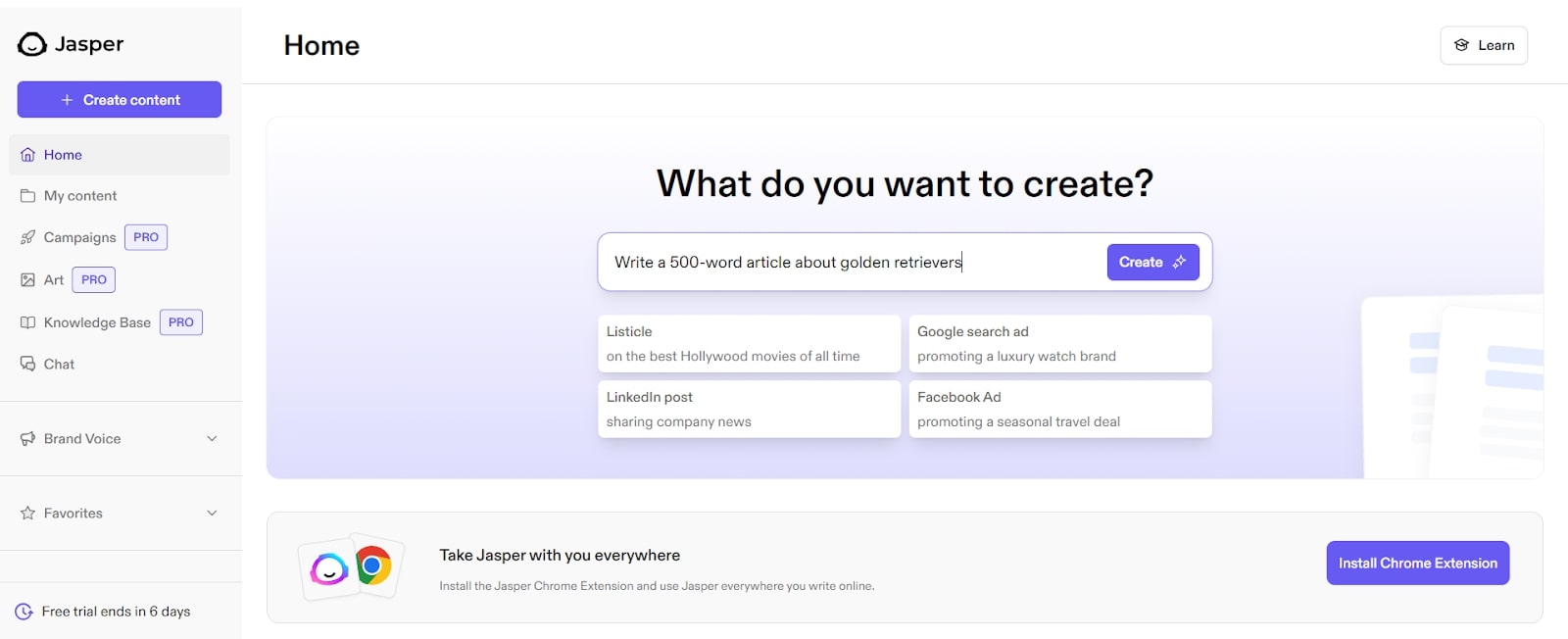
Jasper.ai customization
It also allows for a lot of customization before it generates the article. I was able to add key points that I wanted included and a target audience (it gives suggestions for target audiences based on the prompt). I also could have added custom information and personal stories that I wanted included in the blog post. Like Copy.ai, I was able to create a customized voice by providing a writing sample.
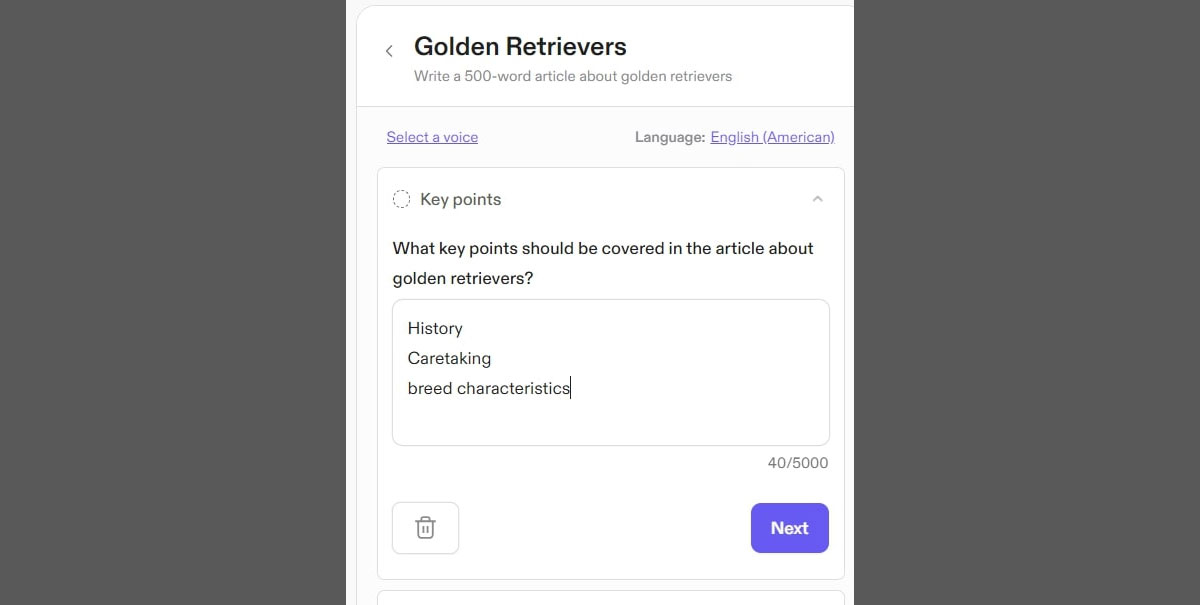
Being able to input information, stories and keywords means content writers can create uniquely tailored articles using this AI writing tool. So if you want more customization, Jasper.ai might be worth the extra cost.
Jasper.ai blog post sample
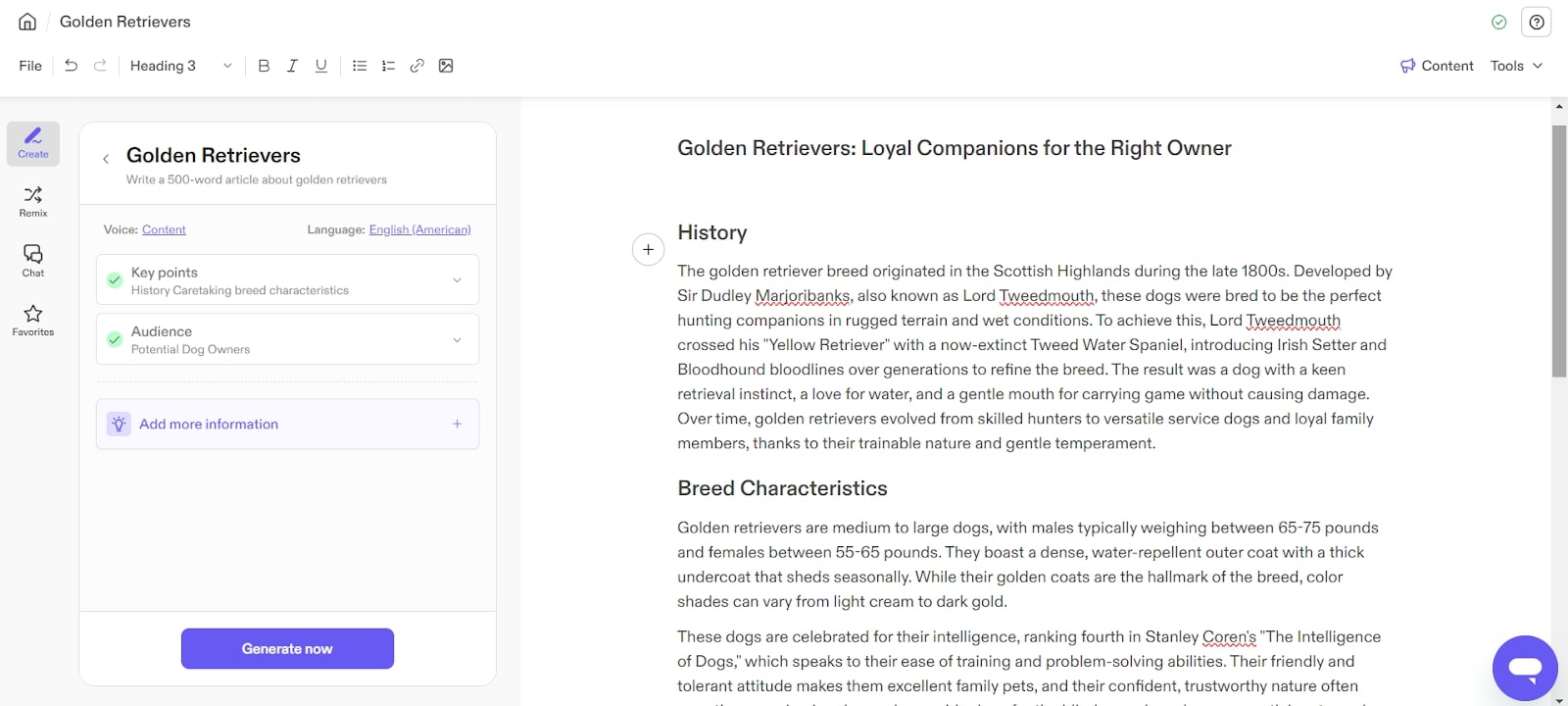
The blog post that Jasper.ai came up with was intelligent and well-written. It had a similar outline to the Copy.ai blog post, but the paragraphs were more well-organized and the writing flowed more easily.
Jasper.ai review
Jasper.ai is the most robust of the AI writing tools presented here, but it's also expensive, and most of what you are paying for, you don't need as a content writer. The writing is professional and readable, and the option of a plagiarism check means blog articles are ready to publish out of the gate. In addition, its easy customization means it can generate exactly the article you need.
Anyword.ai
Anyword.ai is less robust than Jasper.ai but offers more strategic options for content writers and copywriters. It has a full content marketer solution and has been trained on millions of high-performing content assets. It also has multiple pre-existing brand voice options, or you can customize your own by adding URL links to blog content you'd like it to base its style on. It also has a plagiarism add-onn, but it requires upgrading your plan.
However, Anyword.ai doesn't have a free tier, and its first two pricing tiers ($39/mo and $79/mo) only allow you to create one brand voice. There is a free trial, but you are limited to 2500 words, so you don't get much of a chance to experiment.
Anyword.ai customization
One great benefit of Anyword.ai is that it lets you add an SEO keyword and secondary keywords, which is a great feature for SEO writers. You can also specify the audience you are writing for (in my case, I created "potential dog owners" as my target audience). The customization interface is easy to use and helps define the style and purpose of the article.
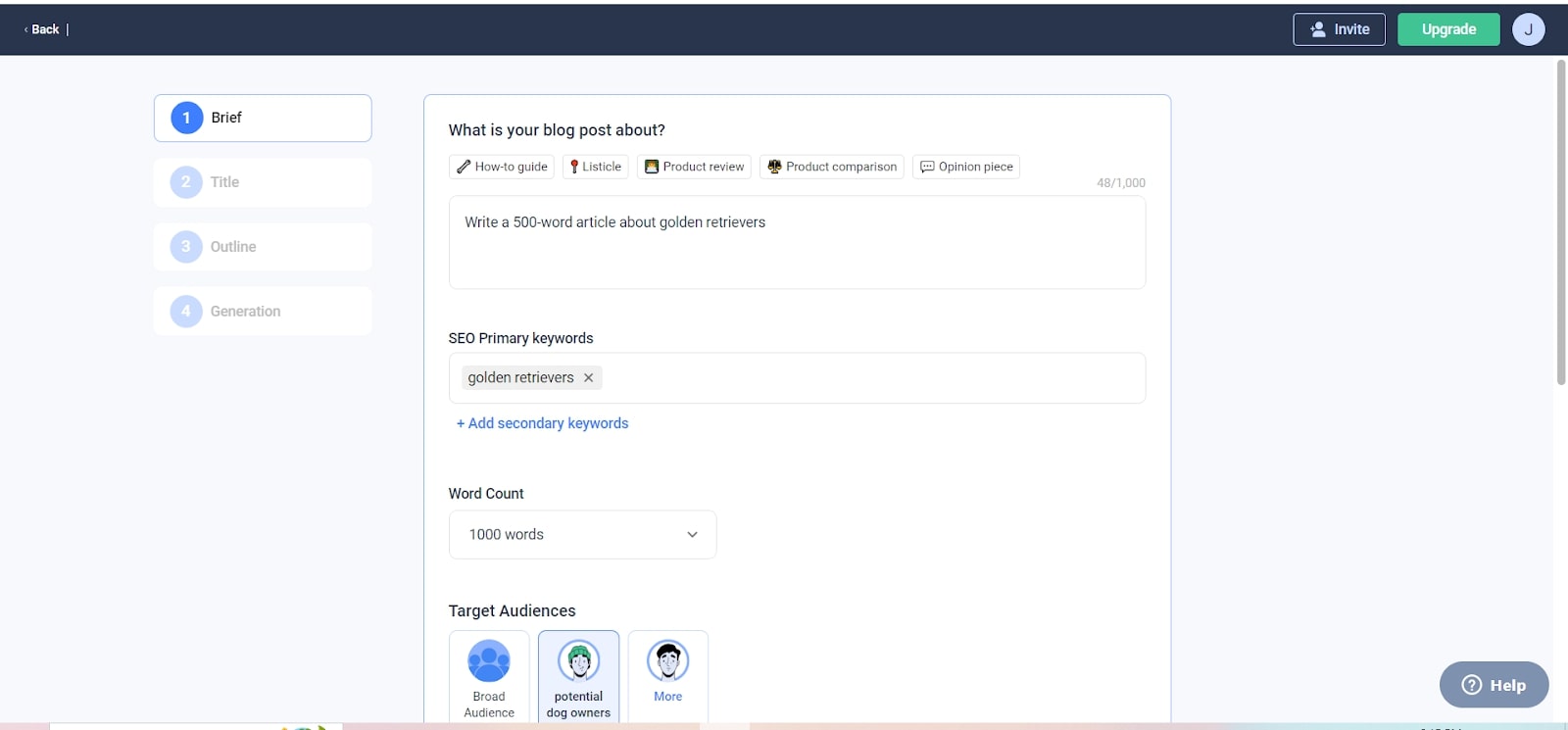
Anyword.ai step-by-step creation
Anyword.ai breaks down the creation process by first showing you a list of suggested titles and how well each is expected to perform.
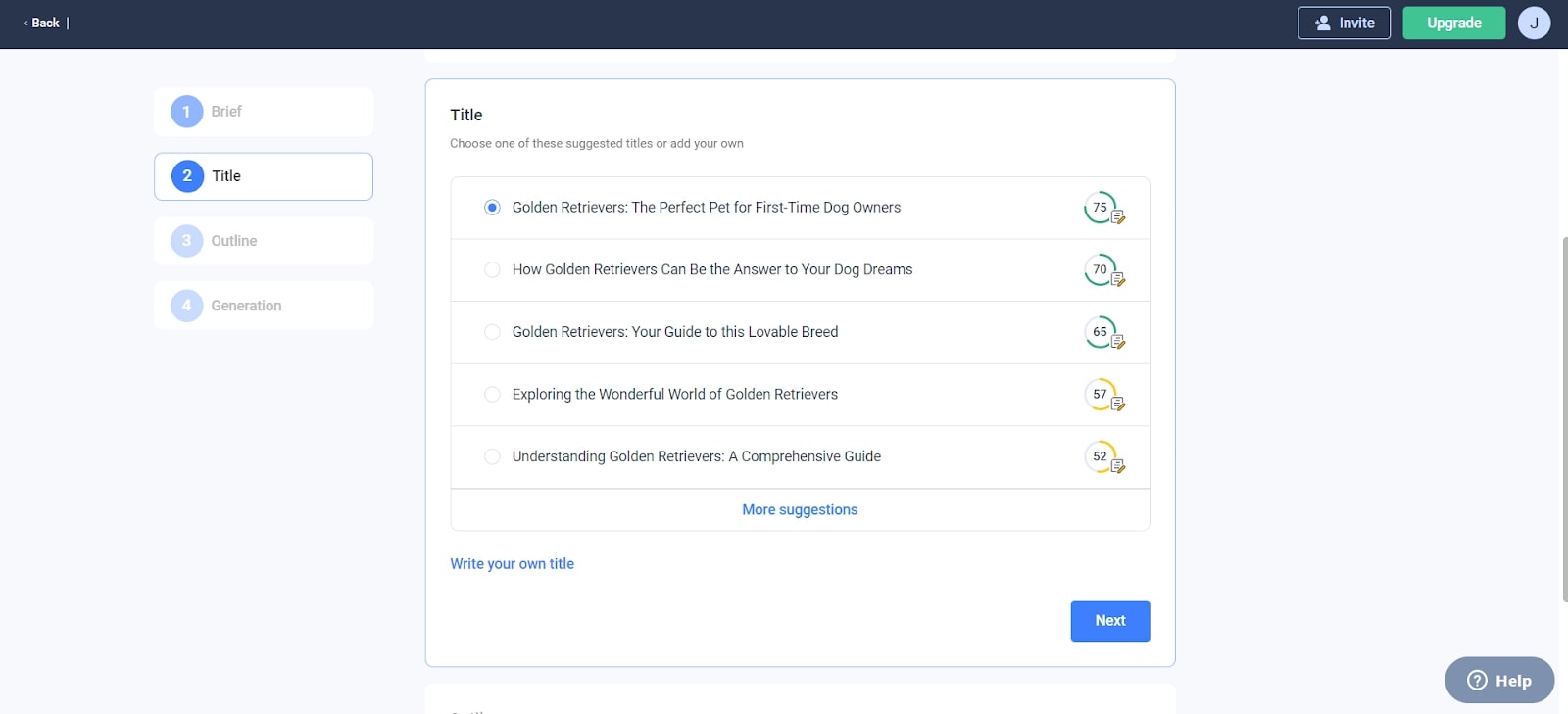
Once you choose a title, it will similarly show you a selection of outlines you can choose from. You can also edit the outline, if you like.
Anyword.ai final blog
The final outcome was clunky and all over the place. Each section seemed as if it was written by someone else. One helpful feature was the ability to regenerate one section of text at a time instead of having to regenerate the entire article and losing the sections that you like.
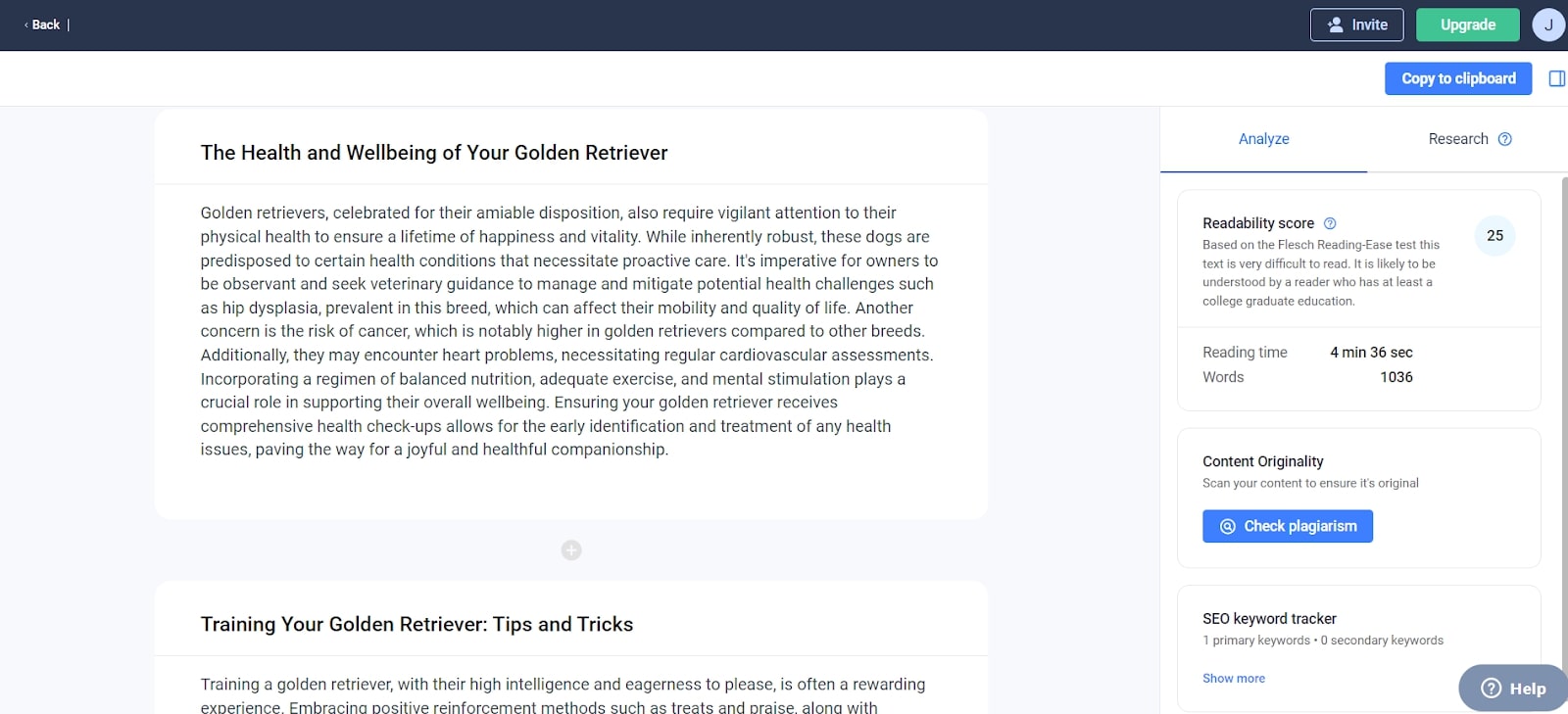
I was least impressed with Anyword.ai's content, even after regenerating the article and various sections. It's also not a cheap option. It is, however, SEO-forward, and may be a good option for SEO writers who want keywords integrated into their articles.
Writesonic.com
I found Writesonic to have the easiest to navigate home page with the most relevant choices for content writers. You can check documents for SEO, write paragraphs, and rephrase awkward writing.
One issue is that they use a credit system, which makes it difficult to tell what you get at each price point until you are more familiar with the platform. It also makes you spend significantly more credits to use its more advanced AI, and it doesn't have a free tier. However, at $16/mo for content writers, it's the cheapest paid option.
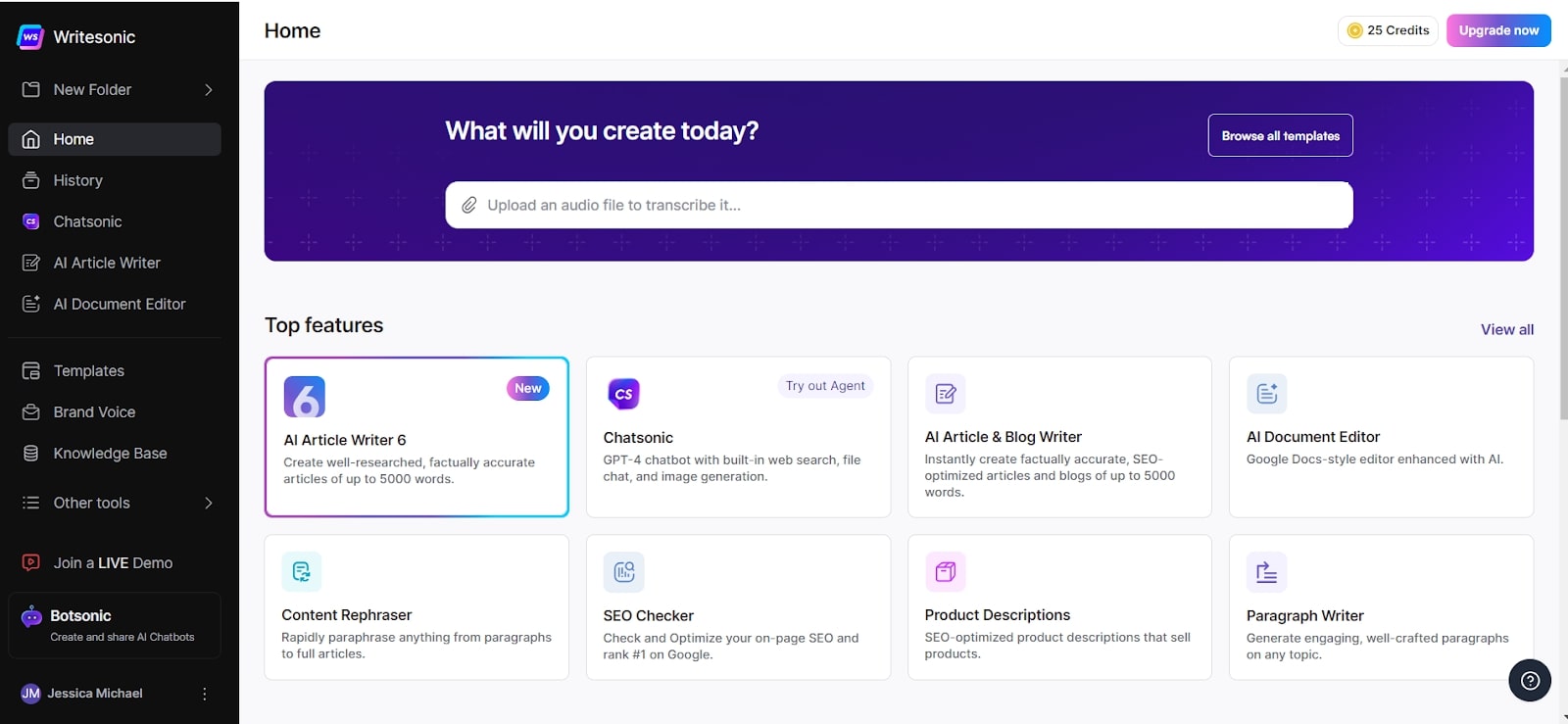
Writesonic blog creation
Writesonic has less customization options when it comes to creating content. However, it does have the option of specifying a call-to-action, which was lacking in the other platforms and is a key element of blog writing.
It generates title suggestions and a selection of outlines to choose from. This is a nice step, but I found the titles to be repetitive and all of the outlines to be similar, so I'm not sure how much choice you are actually given. It's also difficult to define a length for your article.
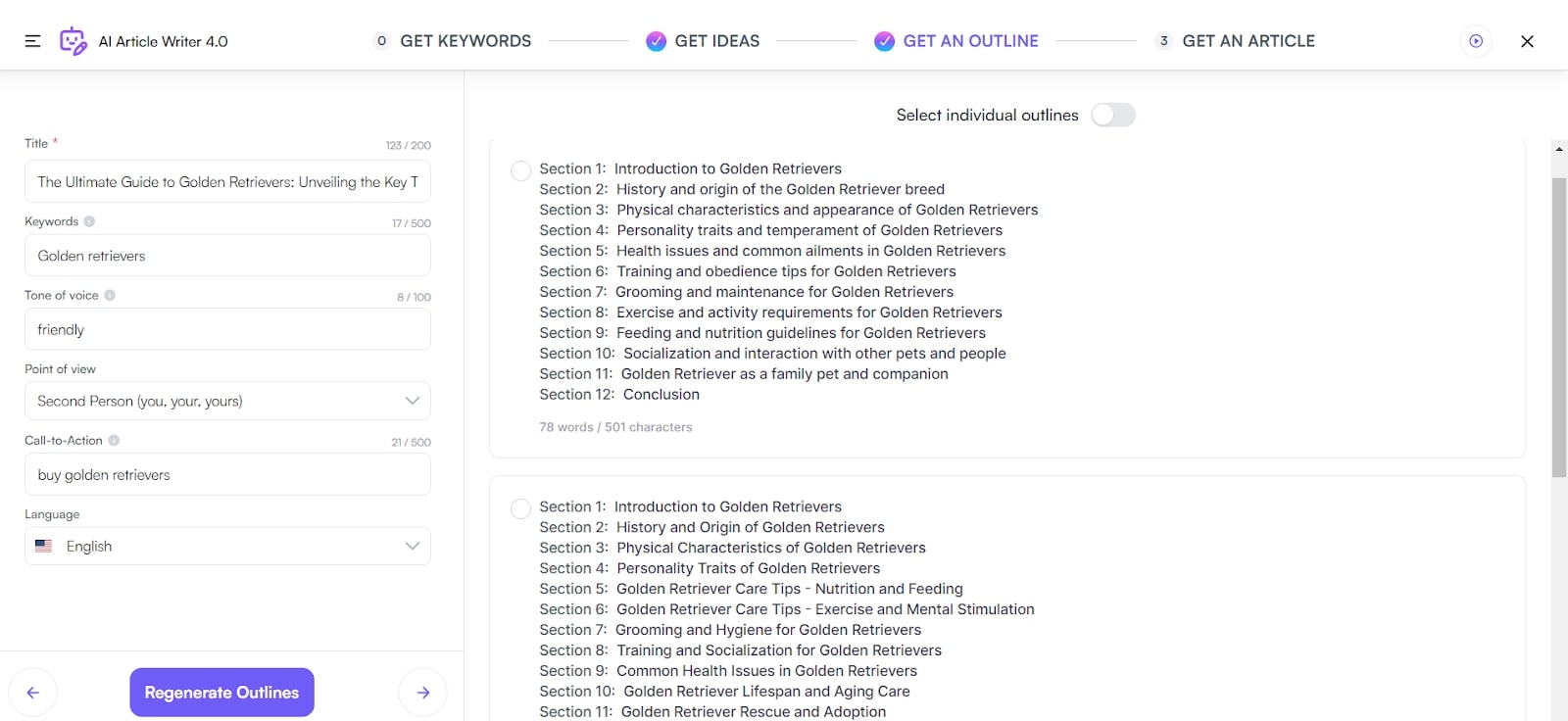
Writesonic final blog
The final blog was easy to read while still maintaining a professional style. This blog had my favorite tone of voice, combining friendly and knowledgeable, and it was well-organized. The call-to-action created from the prompt was excellent, and it also included a photo with sourcing, so I ended up with a ready-to-go blog article.
The results were very usable and the tools were easy to use. It has less customization than some of the other options, so it will work better for content writers focused on simpler blog-style content.
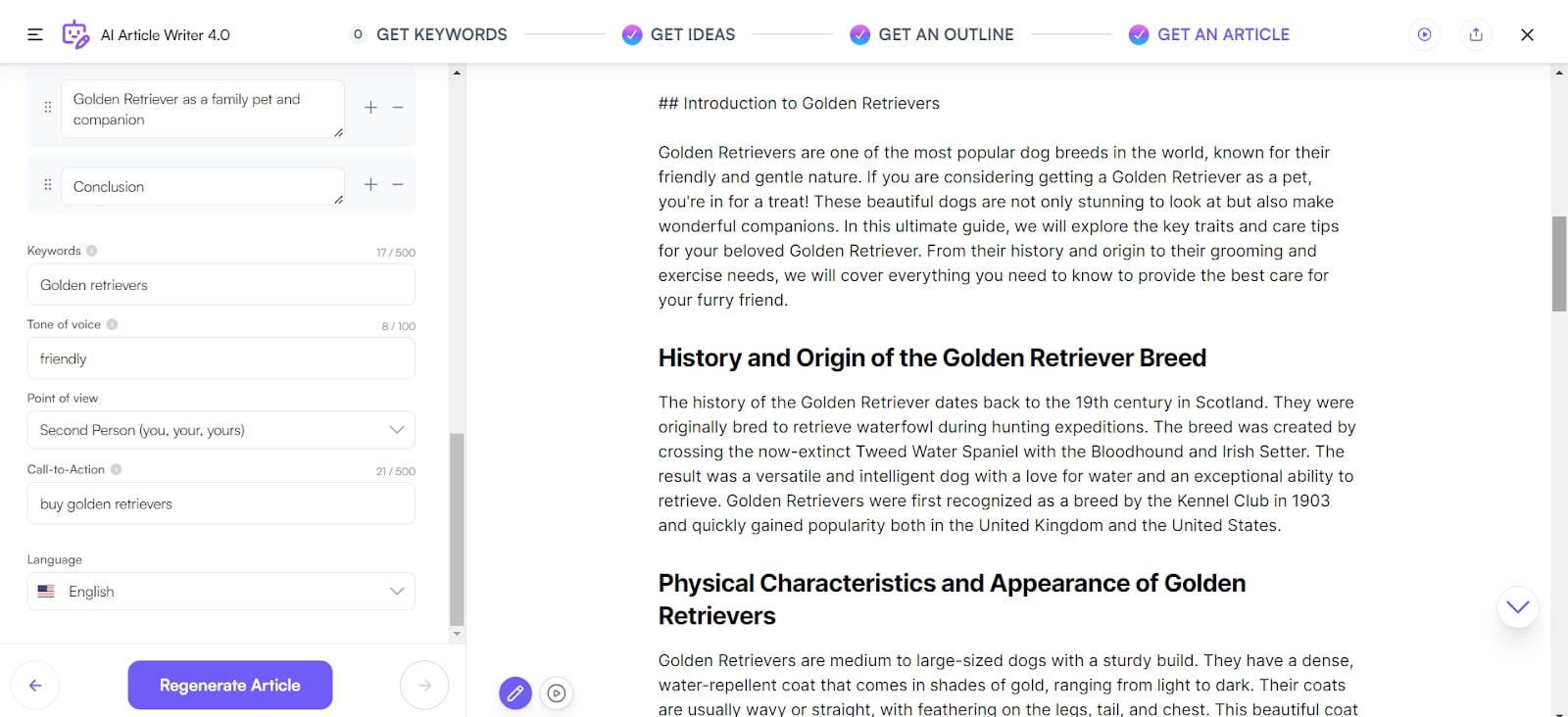
HyperWrite
Hyperwrite is one of the best free AI writing tools for content writers that want to start utilizing AI but aren't ready to commit a monthly fee to it.
It has many free tools for writers, including a proofreader and a rewriter. It even has a fanfic generator, although when I prompted it to write a Twilight-inspired golden retriever story, it came up with one where the dog in question was named Twilight. Still, she invents a whole new way to train other dogs, so not too shabby, Twilight!
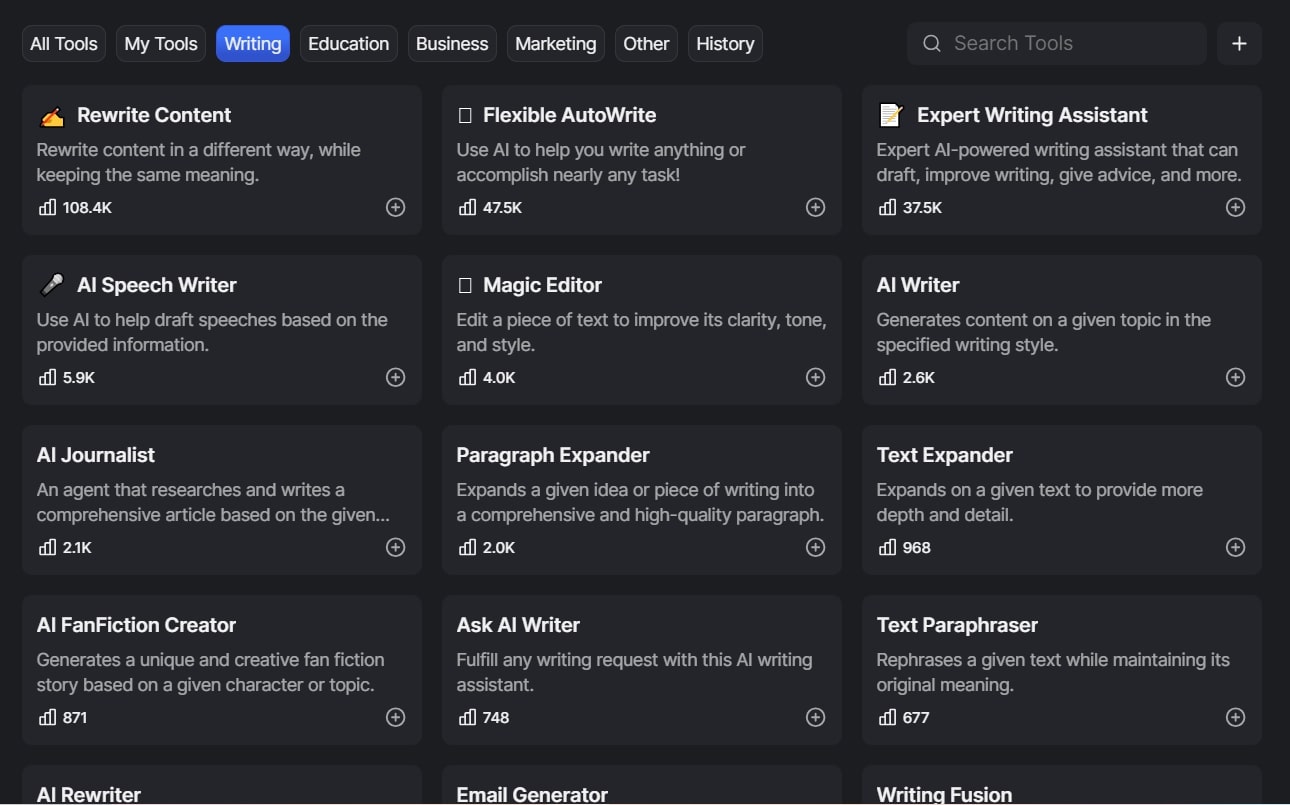
The free version has no bells and whistles, so it's really more useful as a starting point especially if you are an SEO content writer. You'll need to add sourcing, links, and make sure your keywords are included.
HyperWrite blog results
HyperWrite, Copy.ai and Jasper.ai all came up with very similar articles. This is due to the use of similar LLM technology. Even though Copy.ai and Jasper.ai allowed for more customization of inputs, the end result really didn't differ much from this free tool.
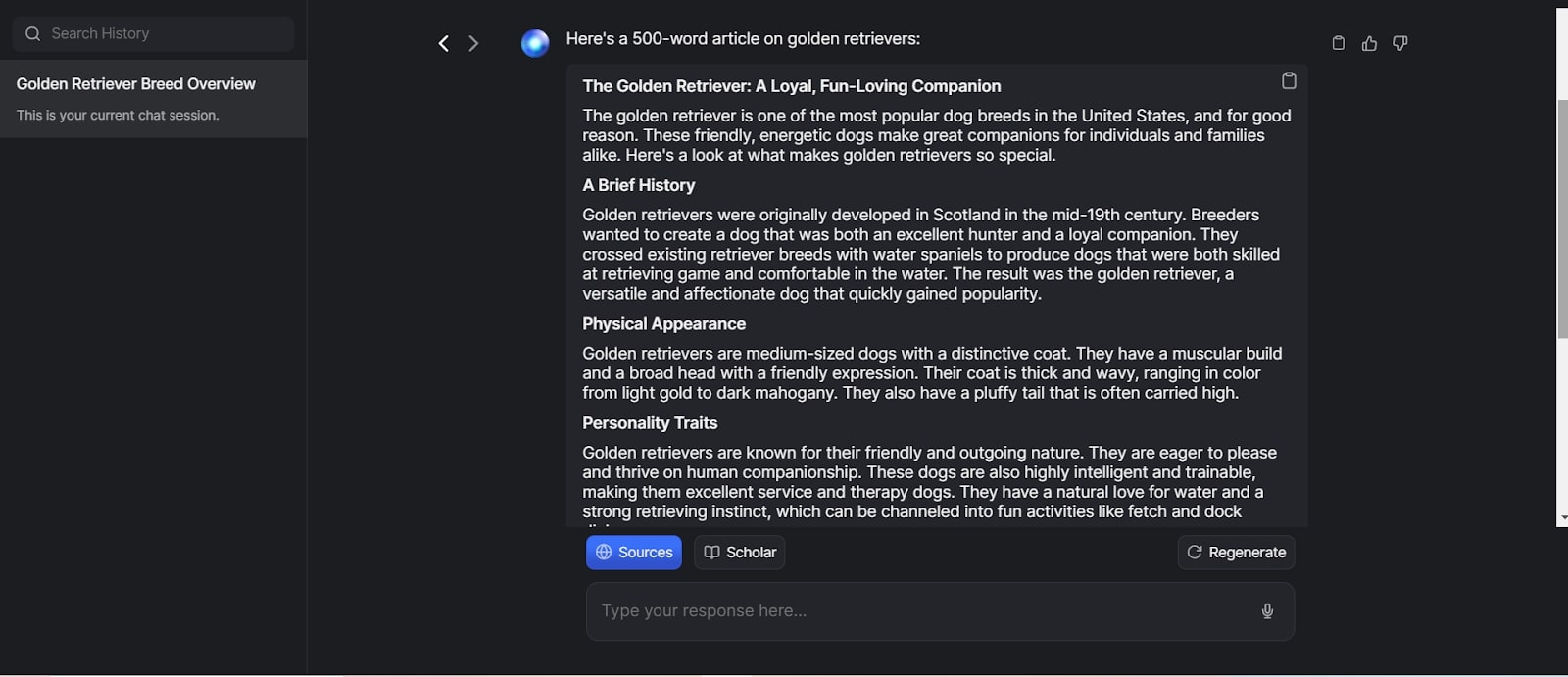
HyperWrite gives the option of a source search or an academic paper search, rather than a general content asset search. I got much better results when I used the source option. However, it does not link the sources, so you will have to find the source of any stats or research that it uses.
Conclusion
Best free AI writing tool: HyperWrite
Best paid AI writing tool: Jasper.ai
Finding the best AI writing tools for content writing comes down to which features each content writer most wants. Do you want help with outlines and rewrites? Do you want an in-built plagiarism checker? Are you most focused on SEO?
Depending on your answers, each AI writing tool reviewed here can be useful for content writing, especially for content writers who have to generate a lot of copy. They can help create outlines and inform article content. However, the content in each case must be run through a plagiarism check, have sources linked, and be edited. None of them are perfect as is.
In addition, because all of these AI platforms are based on the same LLMs, the writing is often strikingly similar. Even playing with brand voice doesn't do much to change the underlying similarities. In my opinion, that means that these writing tools are just that-- tools to be used wisely to help support human writers.
If you are a (human) content writer and would like a great way to showcase your writing samples and services, take a look at Journo Portfolio's great features, and create your one-of-a-kind content writing portfolio today.



